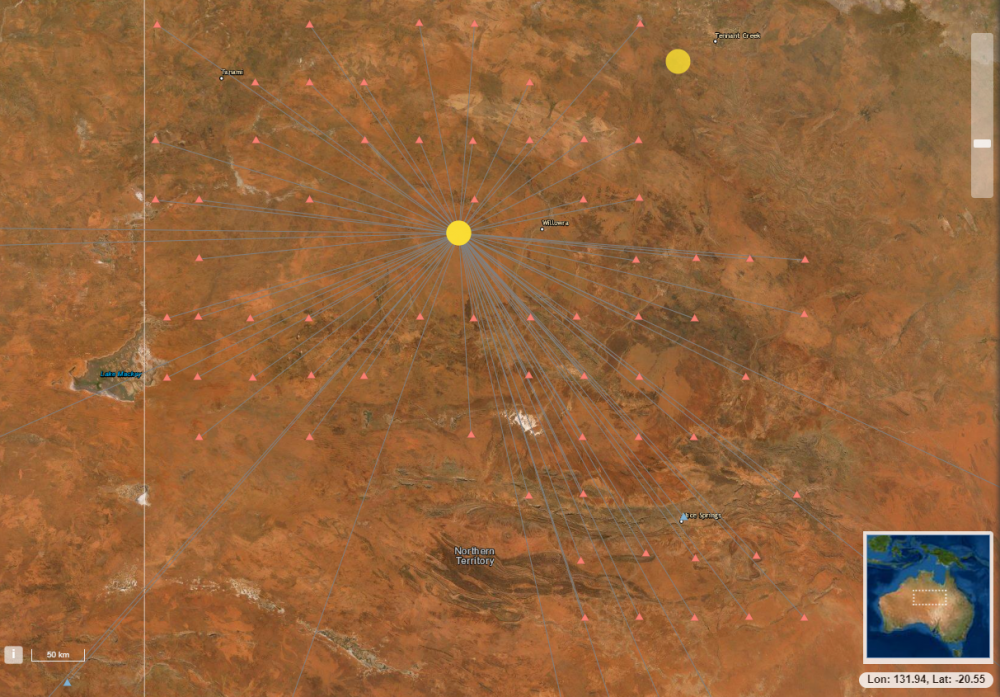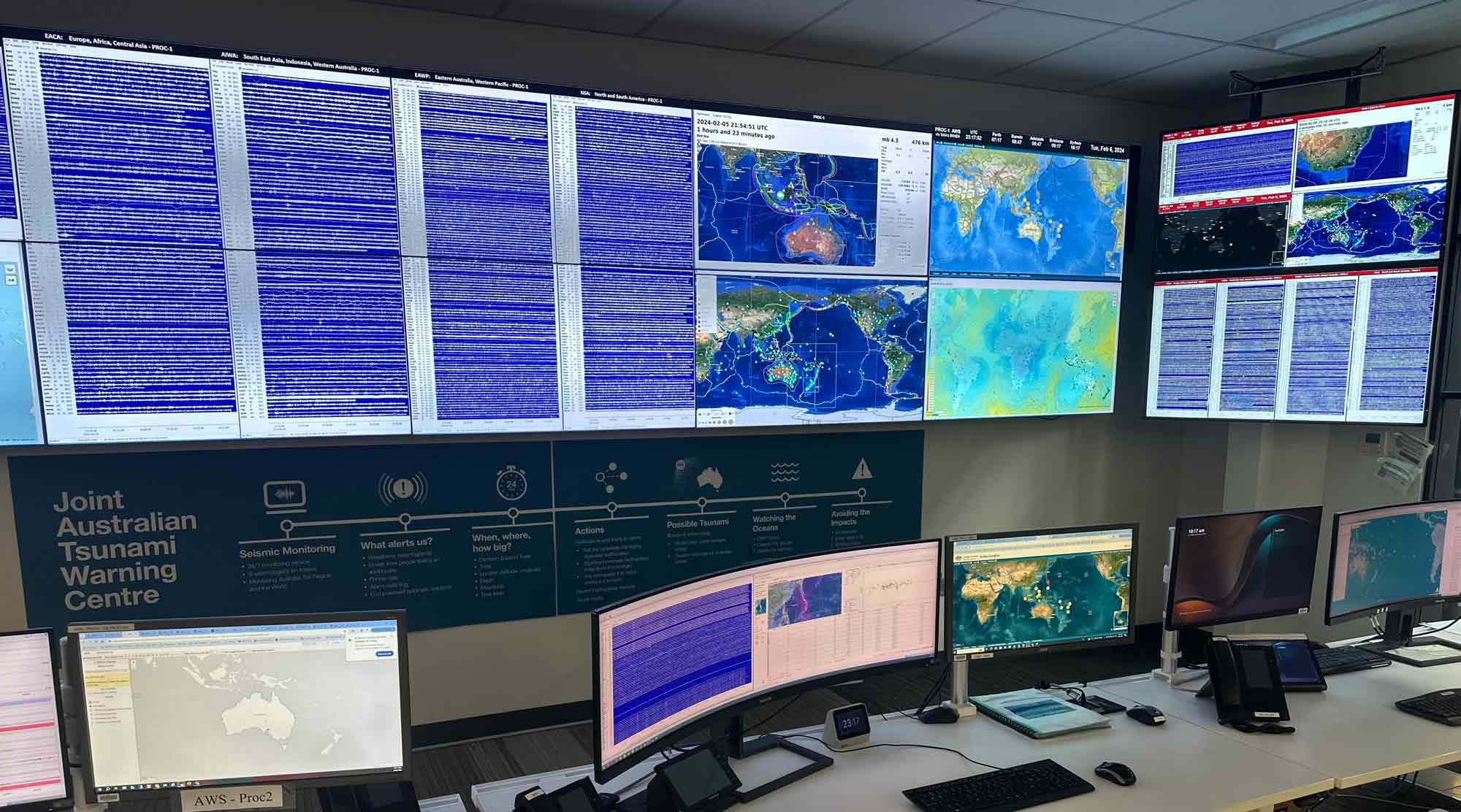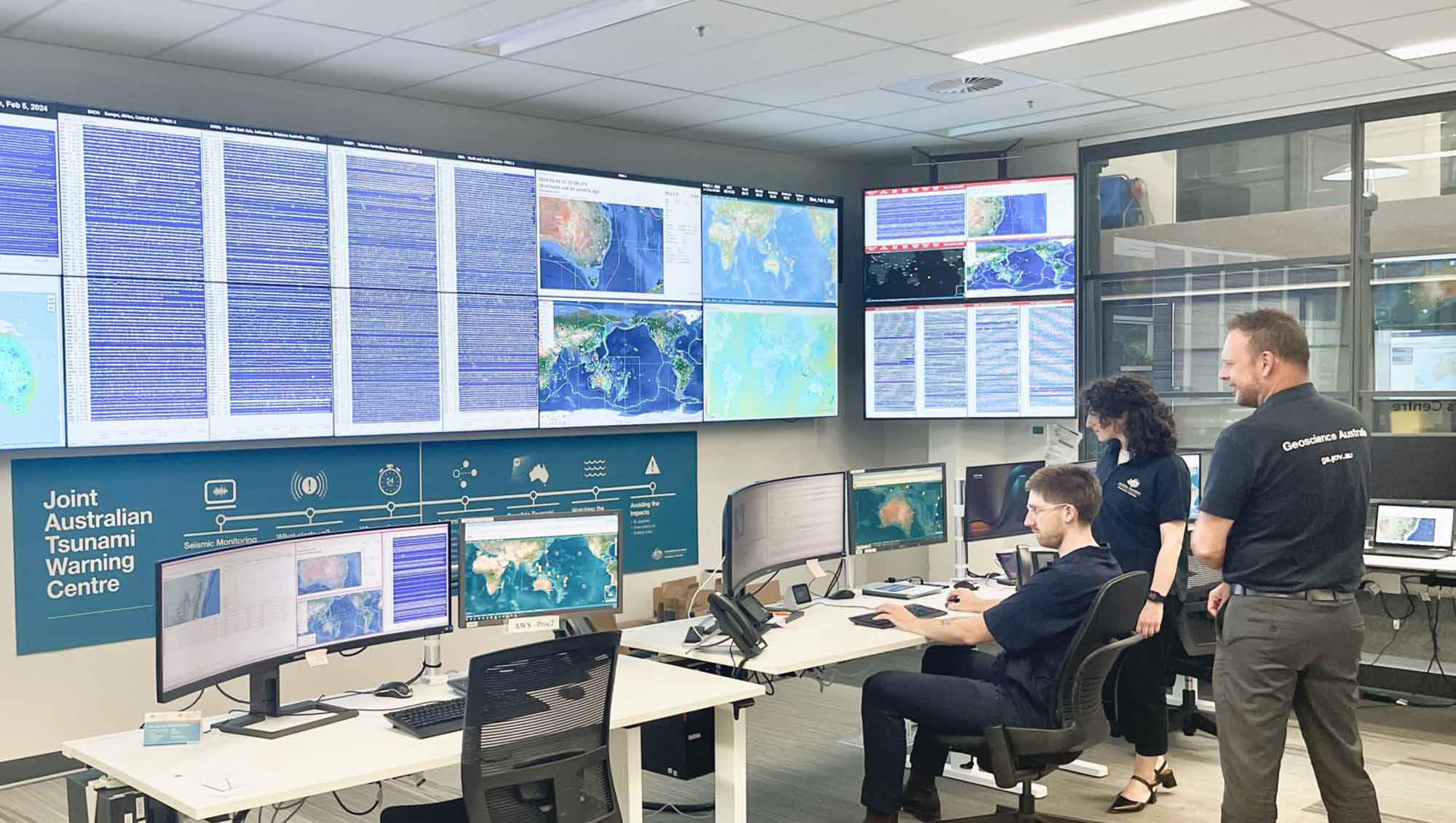Data product National Earthquake Alerts Centre (NEAC)
View Australian and international earthquake data.
Page last updated:18 June 2024
Reliable, time-critical earthquake information and alerts
NEAC operates around the clock to provide rapid alerts of significant earthquakes with the potential to cause damage, injury, widespread alarm or tsunami in Australia and overseas. It also maintains a historic catalogue of Australian earthquakes to help with disaster planning and research.
Who is the NEAC for?
NEAC is the only earthquake monitoring and alerting service in Australia that is operational 24 hours a day. As the Australian Government’s official source of information for earthquakes in Australia and overseas, it’s relied upon by emergency management organisations, local, state and federal governments, the media and the general public for accurate and timely earthquake data.
Using high-availability systems, automated detection algorithms, and expert analysis by on-duty officers, NEAC’s real-time products and services provide critical information as earthquakes occur. As a partner in the Joint Australian Tsunami Warning Centre (JATWC), NEAC also monitors for earthquakes that have the potential to generate a tsunami which may impact Australia or countries in and around the Indian Ocean.
What is NEAC’s capability?
- NEAC uses high-availability ICT systems for reliable, real-time global earthquake monitoring and alerting.
- It receives real-time seismic data feeds from 100+ Australian locations and 500+ locations worldwide.
- It uses modern scientific methods for detecting and characterising seismic events (including earthquakes) in near-real-time. These include methods to estimate earthquake location, magnitude and focal mechanism; model region-wide ground shaking (ShakeMap); and summarise shaking intensities reported by the community (FeltGrid)
- It creates products with spatial data and metadata to support time-critical decision making by emergency managers.
How the NEAC works
- NEAC’s on-duty officers operate around the clock to rapidly review and analyse incoming seismic data to detect, locate and characterise significant earthquakes, and provide alerts to emergency managers and the public.
- NEAC officers undertake three levels of review (Initial, Interim and Final), refining and publishing the updated information as soon as it’s available.
- NEAC issues alerts for Australian earthquakes magnitude 3.5 and above, South-West Pacific earthquakes magnitude 5.5 and above, and earthquakes elsewhere in the world magnitude 6.0 or above. These undergo both an Initial and Interim Review in the first hour.
- When a significant earthquake is detected, government stakeholders receive an Earthquake Bulletin and briefing from NEAC.
- The Earthquakes@GA website provides the latest information about earthquakes detected and analysed by NEAC.
- The public and other stakeholders can subscribe to receive earthquake notifications from the website or on Twitter.
- Our Felt Report system allows members of the public to report the shaking intensity they experienced at their location, via an online questionnaire on the Earthquakes@GA website.
- Felt Reports are processed and combined to create a FeltGrid – a near-real-time map of publicly reported shaking intensity from an earthquake. Shaking intensity from Felt Reports is presented using the Modified Mercalli Intensity scale (MMI).
- A FeltGrid is produced for earthquakes when NEAC receives at least 2 Felt Reports within one gridded area (20 kilometres x 20 kilometres). FeltGrid is used by emergency managers to increase their awareness of the earthquake situation when coordinating an emergency response.
- The Earthquakes@GA website provides a ShakeMap for every significant Australian earthquake above magnitude 3.5. The ShakeMap shows modelled ground-shaking intensity and is also used by emergency managers to improve their awareness and knowledge of the current situation when coordinating their response to an earthquake.
- NEAC manages Geoscience Australia’s Earthquake Catalogue, which includes all NEAC-detected Australian earthquakes and is a vital tool for hazard research and disaster planning. Before being added to the Catalogue, all earthquakes undergo a Final Review.
NEAC’s system of review
NEAC officers undertake three levels of review, over time:
- Initial Review
This is a rapid analysis using available data to provide preliminary estimates of origin time, location, depth and magnitude. This level of review is conducted for the purpose of time-critical earthquake alerting of significant and potentially tsunamigenic earthquakes.These early details may change as they’re reviewed. For moderate-to-large earthquakes (magnitude 5.5 or greater), the Initial Review may be repeated (updated) 2 to 3 times between the initial publication and approximately 40 minutes after the earthquake, incorporating more data at each stage. These later reviews improve on the initial details – in particular, the magnitude estimate. - Interim Review
This is generally completed between 40 and 60 minutes after the earthquake occurrence. By this time, all available real-time telemetered seismic data will be available for analysis of the earthquake. If possible, estimates of magnitude, location and depth are improved.This level of review is undertaken for Australian earthquakes that are assessed as magnitude 2.5 or greater, and earthquakes elsewhere that are assessed as magnitude 5.0 or greater. - Final Review
This is generally completed during the next business day and all available data is considered in this review. It’s undertaken outside of NEAC’s real-time operations to ensure enough time is available for an in-depth review of the earthquake.This level of review is undertaken for all Australian earthquakes assessed at Interim Review as magnitude 2.0 or greater, and all other earthquakes assessed at Interim Review as magnitude 5.0 or greater.
Good to know
NEAC stakeholders include Emergency Management Australia’s National Situation Room, the Australian Global Watch Office, the Joint Australian Tsunami Warning Centre, the Bureau of Meteorology, GNS Science’s National Geohazards Monitoring Centre in New Zealand, the Port Moresby Geological Observatory in Papua New Guinea, and Australian state and territory emergency management bodies.
Looking forward
Geoscience Australia continues to offer end-to-end capabilities that support government, industry, emergency management organisations and the public to prepare for and respond to earthquake impact in Australia.
We are currently developing a new product – EQImpact – which will give emergency managers greater access to scientific methods for modelling earthquake impact, leading to better informed decision making and improved community safety.

Project Building a ground-motion database to better understand seismic hazards in Australia
How Geoscience Australia is analysing earthquakes to inform engineering design and contribute to seismic research internationally.
How we support your sector
Our natural hazard resources can help your organisation be better prepared








